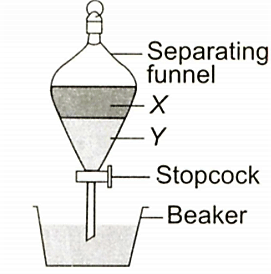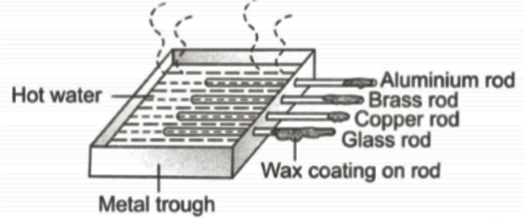Anil Ahlawat Solutions for Chapter: Sorting and Separation of Materials, Exercise 1: EXERCISES
Anil Ahlawat Science Solutions for Exercise - Anil Ahlawat Solutions for Chapter: Sorting and Separation of Materials, Exercise 1: EXERCISES
Attempt the free practice questions on Chapter 3: Sorting and Separation of Materials, Exercise 1: EXERCISES with hints and solutions to strengthen your understanding. NSO Science Olympiad Workbook Grade 6 solutions are prepared by Experienced Embibe Experts.
Questions from Anil Ahlawat Solutions for Chapter: Sorting and Separation of Materials, Exercise 1: EXERCISES with Hints & Solutions
Match column I with column II and select the correct option from the given codes.
| Column I | Column II | ||
| P. | A mixture having the same composition and properties throughout | (i) | Sediment |
| Q. | A mixture, different parts of which have different compositions and properties | (ii) | Supernatant liquid |
| R. | The solid that settles when a heterogeneous solid-liquid mixture is allowed to stand | (iii) | Homogeneous mixture |
| S. | The liquid above the solid settling from a heterogeneous solid-liquid mixture | (iv) | Heterogeneous mixture |
Match column I with column II and select the correct option from the given codes.
| Column I | Column II | ||
| P. | Chalk-water mixture | (i) | A gaseous mixture |
| Q. | Glucose Solution | (ii) | A solid-gas |
| R. | Fizzy drink | (iii) | A homogeneous solid-liquid mixture |
| S. | Smoke | (iv) | A heterogeneous solid-liquid mixture |
| T. | Air | (v) | A gas-liquid mixture |
Shobha took two liquids (coconut oil and water) in a separating funnel as shown in the figure. What would she observe after some time?

Study the given table showing some daily used items which can be made from more than one material.
| Item | Wood | Plastic | Metal | Glass | |
|---|---|---|---|---|---|
| (i) | Cooking pot | ||||
| (ii) | Storage container | ||||
| (iii) | LPG cylinder | ||||
| (iv) | Tea cup |
Which of these are incorrect?
A science teacher labelled three glass slides as P, Q and R. She painted slide Q with light blue colour, slide R with black colour and slide P was left as such. Then she asked students to put the slide on a white paper having X mark on it. Students will be able to see the mark clearly (or partially):
Depending upon the nature of the constituents present in a mixture, Suhana, a class student suggested some methods of separation as shown in the table.
| Types of mixture | Methods of separation | |
|---|---|---|
| Solid — Solid | Handpicking, Sieving | |
| Solid —Liquid (insoluble) | Sedimentation — Decantation, Filtration | |
| Liquid — Liquid (immiscible) | Decantation, Separating funnel | |
| Solid — Liquid (soluble) | Filtration, Decantation | |
| Liquid — Liquid (miscible) | Distillation |
Study the given flow chart carefully.

P, Q and R could be respectively:
Four rods of equal length and thickness but of different materials are coated with wax in the same manner. They are fixed to a trough containing hot water. The given diagram illustrates what happens to the wax on each rod after five minutes.

What can you conclude from the given diagram?
(i) The aluminium rod conducts heat better than the brass rod.
(ii) The aluminium rod conducts heat better than the copper rod.
(iii) The glass rod conducts heat better than the copper rod.
(iv) The wax on the copper rod melts faster than the wax on the brass rod.
